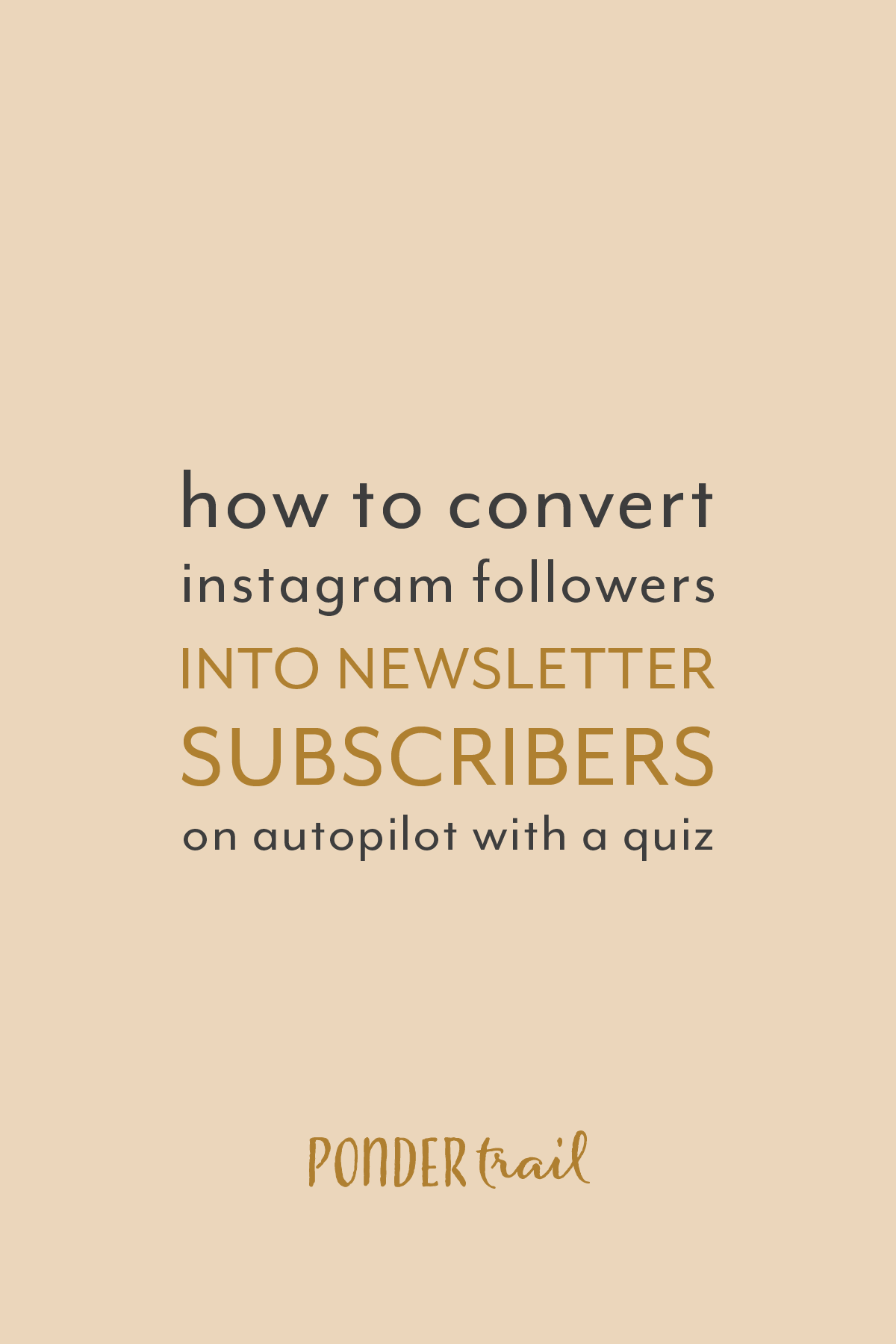How to Show up Consistently for Your Audience (because it’s the Key to Online Business Growth)
If I could only give you one tip for growing your business, it would be to show up consistently. Throughout the years of entrepreneurship, I have been convinced more and more that one of the top keys to growth is to simply show up for your audience each day.
Consistency gives you a steady stream of value to share, it demonstrates your expertise, and it shows that you truly care about your followers, thus building a trustworthy brand.
It sounds simple enough, but it isn’t always easy to show up every day. In fact, it’s quite difficult at times. And with all of the behind-the-scenes work that goes into running an online business, it can be hard to prioritize the front-end of your brand—especially for those of us who are on the introverted side of things. (Can anyone else relate?)
However, the audiences have voted, and it’s confirmed that you can’t grow a business without showing up consistently.
So today, I’ve narrowed down 3 easy ways to revolutionize your consistency. These simple things will help you get rid of the road blocks and keep you ahead of the game so you can show up each day and build a loyal and engaged audience.
Why Showing Up Consistently Is Key to Growth
Think of your favorite brands. Do you love checking in with them on the reg to see what’s new? They probably show up consistently.
Ponder your favorite online accounts you visit for inspiration. Do they add new content regularly? Most likely, they do.
Now consider the creative businesses that have dumbfounded you with their rapid growth. Did they pop on Instagram or on their blog each day? I bet they did!
They might hop on social media to inspire and encourage you. They might launch new products you love. They might touch base inside your email each week. And so on.
You can probably agree 100% that if these brands stopped showing up, they would crumble—some more quickly than others. And if they hadn’t shown up daily in the first place, they’d be nowhere close to the level of success they’re at today.
Let’s take a look at why showing up consistently is so important for the growth of an online business.
Showing up consistently . . .
sets the tone for how often your audience can check in and discover new content
lets your audience know what to expect and look forward toshows your audience they can trust you
makes it easy for your audience to binge your content upon discovering your brand
shows your audience you care
invites your audience in on what your brand is doing
takes your audience along for the ride
lets a new follower discover you and hear from you again shortly so they don’t forget who you are
helps your audience feel more invested in your business
helps you stay above the surface of the algorithm so your followers actually see your content
And the list goes on!
Again, think about your favorite brands who are doing great things and reaping the rewards. Then, think about the ways they show up consistently. This will help give you some ideas for how you can show up and engage with your followers throughout the week.
But for now, here are 3 ways you can start improving your consistency today.
3 Simple Ways to Help You Show Up Consistently
1 // Stay Consistent with Your Business’s Topics.
When it comes to your brand’s topics and the type of content you share, don’t cram everything under the sun into your brand. And avoid the urge to bounce from one random category to the next. Nothing confuses or disinterests an audience faster.
Instead, niche down. Pick a handful of related categories (between 3-6 is good), and stick to them.
From your blog posts to the flavor of your Instagram captions, your brand needs to be cohesive. All of your content should work and make sense together. So be sure to stay consistent with the topics you include in your business.
If you haven’t settled on your niche quite yet, create a list of category ideas you can stick to. Choose topics that are easy to dive into and expand on since the goal is to talk about your topics often—without running out of content.
To ensure you stay relevant to your audience, think about the needs and problems you solve for them, and create content that provides lots of free, high-quality value for your readers.
This is key to growing a loyal following and building trust. And it cultivates an audience that loves each piece of content you put into the world—including your paid products and services.
So keep that in mind as you brainstorm your niche and category ideas.
Tips on Creating Your Niche:
Aim to figure out your niche in the early stages of running your business so you can avoid making a big shift down the road and losing engaged followers.
Creating your niche is one of the key parts in a long-term strategy—though it can be one of the trickier areas of forming your brand. Creative people often have an endless stream of ideas, and it can quickly become overwhelming when trying to choose the best route. So try to prioritize strategy while sifting through ideas.
In fact, that’s one of the reasons why I started Ponder Trail in the first place: to help creative entrepreneurs navigate their ideas and options to create the perfect brand and plan.
If you need help with your brand strategy, I have a new resource in the works for you! Stay tuned for the upcoming announcement.
2 // Create and Follow a Publishing Schedule and Content Calendar.
Perhaps the best way to help with showing up consistently is to stick to a publishing schedule. Planning out when you hit “Publish” on your content makes it so much easier to stay on track.
This will help you create a routine around each new piece of content and when goes live so you can get into a rhythm that fits with your week.
And once you get your publishing schedule set, you can begin filling it up with specific topics and headlines to create your content calendar.
Here’s how:
First, decide what types of content you plan to create.
For example, blog posts, long-form instagram posts, podcast episodes, YouTube videos, Instagram Reels, Facebook Lives, etc.
Brainstorm all of your ideas, and then narrow down the most strategic and doable content forms.
Next, determine how often you will publish something to each of your content venues. For example, 2 blog posts a week, 1 Instagram Live a week, 10 podcast episodes per season, and so on.
Then, choose specific days of the month each type will go live. For example…
Blog posts: Mondays and Wednesdays
Podcast episodes: Tuesdays
Instagram Lives: Fridays
Instagram Reels: 1st and 4th Thursdays of the month
Once your publishing schedule is mapped out, it’s time to outline the specific content you plan to publish that month.
Start with a brainstorm session to list out your best topic ideas. Then, sort and combine any redundant ones, and decide which order you will post them in.
Finally, plug them into your calendar according to your posting schedule. And voila! Your content calendar is now complete!
Keep your content calendar close at hand, and refer to it daily. This will help you stay excited about showing up and creating each piece you wrote down. Plus, each time you click publish, you’ll get a boost of momentum.
Related posts:
3 // Utilize Consistent Brand Design + Marketing Pieces.
To make the previous two steps hassle-free, it’s a good idea to have your brand visuals predesigned and ready-to-use so you can easily create and share content with confidence.
This way, you can show up each day with ease, without repeated hurdles getting between you and that “Publish” button.
Maybe you dread those extra steps that eat up your productivity and always seem to get in the way:
They might be the daily time-sink of creating a graphic from scratch each time you want to upload something to Instagram. Staring at the screen wondering where to begin when you go to create a new content upgrade or newsletter option freebie.
And maybe you experience fears that hold you back from posting:
They might be from the incohesive blog post graphics that look like generic advertisements you’ve been meaning to redo. Or the not-quite-right fonts you can never seem to decide on. Or the ever-changing colors you keep trying out for your brand.
A disheveled brand can make even the best content creators shy into the corner of the internet. Or become quickly discouraged from all of the double-work of trying to design pieces from the ground up, one-by-one.
Instead, you should work smarter—not harder—and have an arsenal of templates and graphics at your disposal. Pair them with a complete brand style guide so you can create new things down the road without them looking “off” in some way or another, and you’ll be off to a great start.
For example, you’ll want to have a collection of blog post and Instagram templates so you can plug in your new title and image when it comes time to schedule or publish your post. A graphic for your new blogs should only take a few minutes to create, so consider an easy-to-edit template if it currently takes all afternoon.
When you work with a designer, be sure to inquire about graphic templates for your brand collection. I include 3 options for clients to choose from in my design service. Their most common selections are blog post graphics, Instagram templates, and Pinterest images.
Learn more about my brand and website design process here.
In conclusion, from product launches to social media growth to increased hype, I can attest to consistency being the underlying reason for success. I’ve experienced it in my own entrepreneurial journey, and I’ve seen it demonstrated by countless successful businesses.
Related posts:
So I would love to ask, have you been stellar at consistently showing up for your audience? Or is it something you have yet to master? If you have been prioritizing your consistency, have you seen it impact your growth? What tips do you have for show up and staying consistent?
Let me know in the comments! I love hearing what methods fellow entrepreneurs like to follow.














